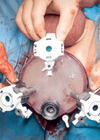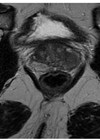The early adoption of new technology has long been a trademark of urological surgeons. Like the introduction of the cystoscope, lasers and flexible endoscopy, the field of urology has witnessed a revolutionary transformation with the advent of robotic surgery.
Robotic-assisted surgical techniques have offered enhanced precision, dexterity, and visualisation to urologists, permitting the increasing implementation of minimally invasive surgery without the limitations of laparoscopic techniques.
The da Vinci® Surgical System, developed by Intuitive Surgical, was a pioneering platform which has dominated robotic surgery for the last couple of decades. Since its FDA approval in 2000, its worldwide use and utility has increased exponentially with an estimated eight million robotic procedures performed worldwide. There are an estimated 160 da Vinci robots in the UK with the majority of uro-oncological procedures now done robotically; 94% for radical prostatectomy, 75% for partial nephrectomy and 60% radical cystectomy.
At present in the UK, there are two other robotic devices approved for use in urology; the UK-based CMR Surgical’s Versius® device (eight in use) and most recently Medtronic’s Hugo™ device (two in use). The expiration of some of the da Vinci patents in 2019 however has allowed for newer and alternative technologies to emerge and provide competition. Incredibly, 50 new robotic platforms were presented at this year’s Society of Robotic Surgery Conference held in Melbourne and with so much variety on offer, it will be difficult to distinguish between the platforms. There are however some integral factors to consider when assessing each device.
Open vs. closed console
The ‘console’ is the unit whereby the surgeon controls the robotic arms, usually using a combination of hand and foot controls. In a classical closed console set-up such as in the da Vinci models, the surgeon has his / her head fixed in position looking into a 3D binocular viewer interface. An open console however such as the Versius or Hugo device uses an external 3D monitor which is viewed with polarised goggles. The former has the advantage of being submerged into the operative field but limits oversight of the operation room and requires microphones for communication with the surgical team. Although both console set-ups are usually within close proximity of the patient’s bedside, 5G and upcoming 6G technology would allow for the surgeon to operate completely remotely.
Multi-port vs. single port
The choice between multi-port and single port robotic surgery came as a result of the development of the da Vinci single-port (SP) system, which existed as the first purpose-built single-port surgical system released to the market. A single point of entry permits the passage of a 25mm multichannel cannula, which further allows the passage of three 6mm wristed instruments, as well as a 3D-HD camera. The decision to opt for multi-port or single-port depends on a variety of factors, including surgeon preference, patient anatomy and the specific robotic system being used, or available.
"Firstly, adoption of new platforms needs rigorous training and careful evaluation to ensure quality and safety is maintained"
Single-port robotic surgery holds an obvious cosmetic benefit to the patient, due to the requirement for a solitary incision, which can often be hidden in the navel. As such, there are fewer reported port site complications, such as infections or incisional hernia. Multi-port robotic surgery is reported to hold an advantage in enhanced dexterity, and reduced chance of instrument clashing.
Modular vs. all-in-one
A further area for debate is the choice between a modular robotic surgery system, versus an all-in-one robotic system. Though a decision is generally made based on the preference of the surgical team, there exist different advantages and disadvantages of each system.
With a modular system, separate components exist that can be used in differing combinations dependent on the procedure to be performed, or individual needs of each patient. This holds the advantage of flexibility, with a tailor-made approach capable of adoption for each individual patient, or procedure. It also holds the advantage of cost efficiency, with only the necessary components requiring purchase, and upgradability, with the allowance for individual components to be upgraded as technology advances, rather than entire systems. Modular components are associated with increased complexity, which may lead to greater set-up time and learning curve during training.
All-in-one robotic surgery systems, have all components integrated to a single platform. This allows for a comprehensive and standardised system which permits easy set-up, streamlined training, and consistency. However, they are typically more expensive, and have limited customisation with reduced options to tailor the system to unique cases.
Conclusion
Although Intuitive’s da Vinci has dominated the robotic landscape for the past two decades, competition from a number of new platforms is likely to shake up robotic surgery. Cost and health economics will play a key role in deciding which new platforms succeed, however there are a number of other considerations that need to be taken into account. Firstly, adoption of new platforms needs rigorous training and careful evaluation to ensure quality and safety is maintained. Using scientific approaches such as the Idea, Development, Exploration, Assessment and Long-term (IDEAL) study framework by McCulloch et al. [1] is imperative to ensure safe introduction of innovative devices. Secondly, there needs to be careful thought regarding ‘mixing’ of robotic devices. As highlighted, there are a number of differences between different platforms. It can be fairly seamless switching between some of the platforms however this is not always the case – for example both da Vinci and Hugo use a similar layout for both hand and foot controls however CMR is hand operated only.
At present in the UK, only Guy’s and St Thomas’ Hospitals offer all three platforms and it has gone through rigorous training mentorship to ensure adequate safety is maintained across the board. Although Guy’s has demonstrated safe transition between the three robots there does need to be guidance and consensus amongst robotic surgeons as to ‘cross-usability’ of differing platforms especially with a large number of robotic devices arriving in the market.
References
1. McCulloch P, Cook JA, Altman DG, et al.; IDEAL Group. IDEAL framework for surgical innovation 1: the idea and development stages. BMJ 2013;346:f3012.
Declaration of competing interests: None declared.












